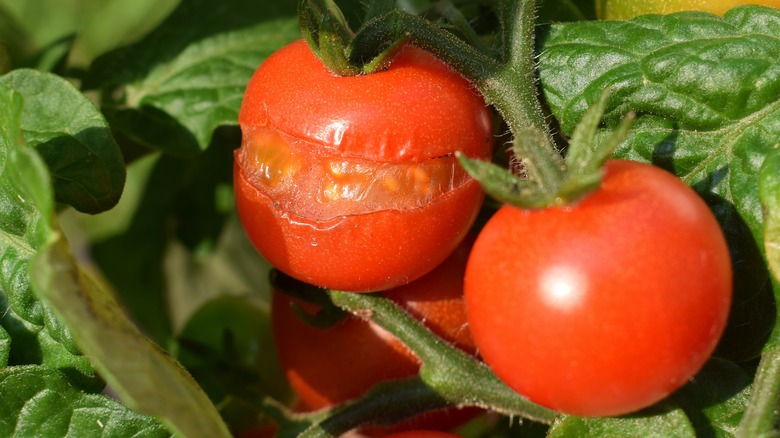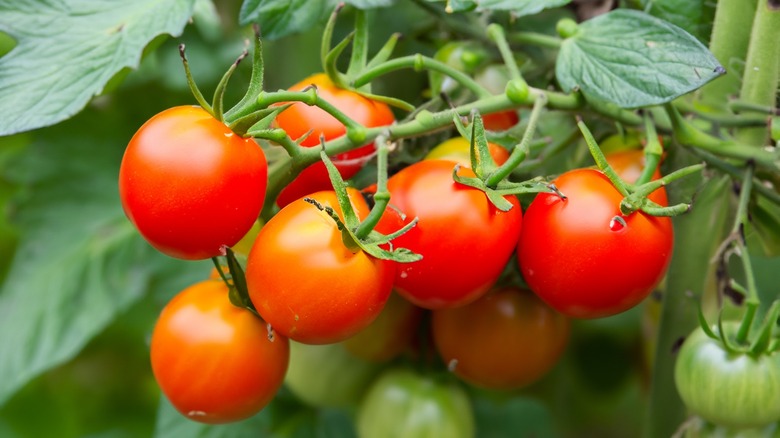The Simple Pre-Planting Tip That Helps Prevent Tomatoes From Splitting
There's nothing more disappointing than heading out to pick a ripe, juicy tomato only to find it split wide open. This common problem can ruin your harvest just as the fruit is at its peak. Not only do splits make tomatoes less appealing, but they also open the door to pests, mold, and rot. In humid or wet conditions, split tomatoes can spoil even faster, sometimes before you get the chance to pick them.
Tomato splitting usually happens because of irregular watering. If plants go through a dry spell and then suddenly get a lot of water, either from rain or overwatering, the fruit takes up moisture so fast that the skin can't keep up, causing cracks. These cracks or splits can appear as radial cracks, running from the stems down the sides, or as concentric rings around the stem. Some varieties, especially larger or some heirloom types, tend to split more easily than others. Unlike other deformities like leaf yellowing or blossom end rot (in which the bottoms of your tomatoes turn brown), cracking is less likely to be related to nutritional deficiencies and is easily preventable with a little preparation early in the season.
Good drainage is one of the simplest ways to reduce the risk. Raised beds and containers with drainage holes help keep moisture levels more consistent by preventing sudden water buildup around the roots. Mulching around your tomato plants can also help by slowing evaporation and keeping moisture levels steady between watering and rain. Regularly checking soil moisture, especially during dry spells, gives you a better chance of keeping things balanced.
How to set your tomatoes up for success
Choosing the right planting setup is only part of the solution. To create good drainage, fill your raised beds or containers with a loose, high-quality soil that resists compaction and drains well without becoming too dry. Because drainage tends to leach nutrients out of the soil, be sure to fertilize with an organic option throughout the season, following label directions so you don't overdo it. Overfeeding can stress plants just like inconsistent watering can.
Watering habits make a big difference, too. Tomatoes thrive on steady moisture. Instead of letting the soil dry out and then soaking it, aim for consistent watering to keep your tomatoes from cracking. Check your plants daily during rainy periods or heat waves so you can adjust as needed. Adding a few inches of mulch helps regulate soil temperature and reduces water loss, which protects fruits from stress-related cracking.
A final tip is to consider the varieties of tomatoes you grow. Some tomato types, like small cherry varieties or crack-resistant hybrids, are naturally less prone to splitting. You can find a particular tomato's resistance to cracking and other problems printed on the packet of seeds, or ask your favorite greenhouse grower. They often know which tomatoes grow best in your area and will have tips for planting and care as well. Planting some crack-resistant tomatoes alongside your favorites can help ensure that at least part of your harvest stays intact. With good drainage, quality soil, mulch, and careful watering, you can prevent cracking and splitting tomatoes to enjoy a healthier harvest.

